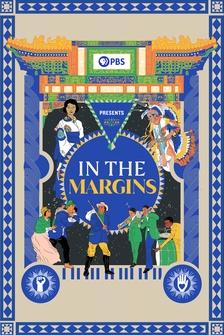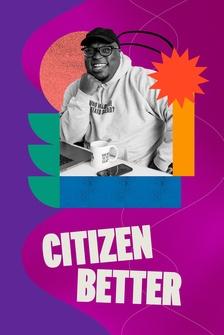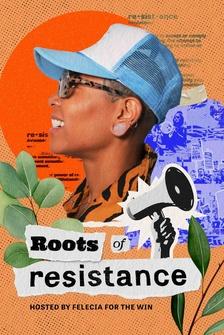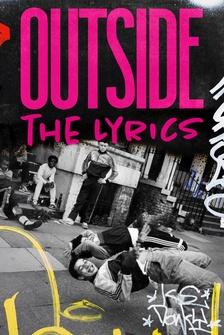2020 marks 100 years since women were giv en the right to vote in the United States!
On August 18, 1920, the 19th Amendment to the Constitution was ratified which says: “The right of citizens of the United States to vote shall not be denied or abridged by the United States or by any State on account of sex.” This was a major milestone for women in the US and one that definitely didn’t happen overnight.
There were decades of activist work -- and plenty of ups and downs -- that got us there, so today we’re going to learn 6 facts about the 19th Amendment.
Starting with fact 1: Demanding the right to vote wasn’t a popular idea at the Seneca Falls Convention.
In 1848, this convention was held at a chapel in Seneca Falls, New York by a group of women who wanted to discuss their rights.
They were surprised by the massive crowd of 300 people, men and women, who joined them.
One of the convention’s main agenda items was to vote on the resolutions laid out in the Declaration of Sentiments, a document that was mostly written by Elizabeth Cady Stanton.
Stanton’s husband, an attorney, initially helped her draft the document, but stopped when she wanted to add the right to vote, claiming “You will turn the proceedings into a farce.” Some sources even say he left town over the disagreement.
He wasn’t the only voice against the addition.
Elizabeth’s fellow convention organizer Lucretia Mott objected, saying, “Why, Lizzie, thee will make us ridiculous!” In the end, the ninth resolution read, “Resolved, that it is the duty of the women of this country to secure to themselves their sacred right to the elective franchise.” And after a rousing speech from none other than Frederick Douglass, the vote for the ninth resolution went through.
Although it was not unanimous like the other ten.
But I don’t want to pour unquestioned praise on this convention.
It’s important to note that there were likely no African American women in the room.
And the Declaration of Rights and Sentiments has blatantly racist ideas in it, including the claim that the rights they were asking for were given “to the most ignorant and degraded men--both natives and foreigners.” This is a good time to jump to fact 2: Being pro suffrage didn’t equal being anti racist.
Many well known suffragists were part of the abolition movement first.
Elizabeth Cady Stanton, Susan B. Anthony, Lucretia Mott and many others fought for the end of slavery alongside abolitionists like Frederick Douglass and Sojourner Truth.
They learned a lot from the movement, particularly from the work of the American Anti-Slavery Society, including how to create persuasive newspapers, organize events, and find compelling speakers.
But in the mid-1800s a serious push towards giving black men the right to vote caused some suffragists to split off from the abolition movement.
Stanton and Anthony, for instance, believed that white women deserved the vote either before or at the same time as black men.
They actively campaigned against the 15th Amendment because it would only enfranchise black men.
And in their quest for women’s suffrage, they openly teamed up with well known white supremacists.
Stanton gave speeches containing slurs and stereotypes.
It’s perhaps worth noting that the 15th Amendment wasn’t just passed because it was the right thing to do.
It was also a political decision.
The Republican Party believed black male suffrage would benefit them by getting them a lot of votes.
They didn’t feel the same about women’s suffrage...because, you know, there were confederate women.
Eventually, the fences between certain abolitionists and women’s suffragists did mend.
For example, Douglass’s relationship with Stanton and Anthony was sour for a while, but later in life, they began interacting again.
He called himself a “Woman’s Rights Man” and gave Stanton the credit for that.
And Anthony was with Douglass at a suffrage conference on the day he died.
That leads us to Fact 3: Susan B. Anthony and Elizabeth Cady Stanton rewrote history.
These women come up often when we’re talking about women’s suffrage in the United States because...that’s exactly what they wanted.
In fact, soon after it happened, the Seneca Falls Convention was on the verge of being forgotten, according to professor Lisa Tetrault, an expert on the suffrage movement.
She has explained, “Some of the older veterans still remembered the event as the first convention, but they attached no special significance to it.
Almost no one considered Seneca Falls the beginning of the movement.” So facing the possibility of being forgotten, Anthony and Stanton decided their way forward was to write a 3,000 page book: History of Woman Suffrage.
In that history, they played prominent roles, of course.
But women’s suffrage wasn’t started by these two women.
Because think about it: this country is big.
Movements don’t start with one convention in upstate New York.
They build gradually and nationally.
And because of that the suffragists were much more diverse than Anthony and Stanton would have us believe.
In its finished form, History of Woman Suffrage was nearly 6,000 pages total, making up six volumes.
Stanton and Anthony were responsible for the first three volumes, which cover the years 1848 through 1885, beginning with the Civil War and ending with women receiving the vote in Wyoming.
History of Woman Suffrage describes the movement and contains what the authors viewed as important documents from the time like speeches and letters.
But Stanton and Anthony’s history left many of their contemporaries out in the cold.
Modern historians are working to shed light on the many other activists from around the same time as Anthony and Stanton.
There were women like Sojourner Truth, who toured the entire country with her speeches for equality, and Yankton writer Zitkala-Sa who wanted Native Americans to be enfranchised, but first had to advocate for their recognition as citizens.
The trajectory of the voting rights journeys of these women ended up quite different than the ones of Stanton and Anthony.
Native Americans weren’t considered US citizens until the Indian Citizenship Act was passed in 1924.
(And even after that, Native American women weren’t always enfranchised.)
Hawaiian women went through similar struggles.
And until changes to the law in the 1960s, poll taxes and literacy tests prevented many black Americans from voting, and they continue to face barriers to voting to this day.
Organizing was crucial to women’s suffrage.
And although we mostly talk about how that unfolded on the east coast, it was happening in the west as well.
Which leads us to Fact 4: Wyoming and Colorado gave women the right to vote almost 30 years before there was national women’s suffrage.
Women’s clubs were a big part of that.
There were clubs devoted to women’s suffrage all over the western US starting in the 1870s.
They were typically made up of middle class women...because they had the time to be in clubs.
Think ladies who lunch...and also do politics.
They used newspapers to spread the word about their activism and push for suffrage.
And they discussed many topics beyond the vote like education, politics, self-improvement, philanthropy, and art.
One early leader who helped enfranchise women was teacher and library founder Elizabeth Ensley.
In Colorado, she campaigned for suffrage, which women received with 55% of the vote in November 1893, making Colorado the second state with women’s suffrage after Wyoming in the modern era.
Ensley was the Denver correspondent for The Woman’s Era -- the first national newspaper to be published exclusively by African American women.
And she was one of the founders of the Woman’s League of Denver as well as the Colorado Colored Women’s Republican Club.
These clubs were equally important after women became enfranchised because they discussed information about their rights as voters and how voting worked.
This had an effect on election outcomes.
Thanks in large part to the votes of black women, Colorado’s first black state legislator, Joseph H. Stuart, was elected in 1894.
That same year, Colorado also got three female state legislators.
And these women were fighting for more than just voting rights.
They were fighting for respect.
These clubs, with their focus on self-improvement and education, were a way to try to invalidate some of the unwarranted stereotypes that black people faced.
By 1940 there were over 70 black Republican women’s clubs in the US.
Marginalized groups were a big part of the story of women’s suffrage in the west.
One of the major barriers to that suffrage was racism against Chinese people.
A common argument was that women should not get the right to vote because that would include Chinese women.
But some suffragists knew that reaching out to communities of color was essential to their cause.
For instance, in California, where women’s suffrage barely passed in 1911 with 50.7% of the vote, the majority of Chinese voters voted for it.
Which leads us to Fact 5: The day before Woodrow Wilson’s inauguration in 1913, 5,000 suffragists marched on Washington DC.
28-year-old Alice Paul came up with the idea for the march.
She had spent time in England, where she was inspired by the British suffrage movement and their more extreme tactics.
So it was important to Paul that the parade be noticed.
And what’s more noticeable than 5,000 people marching through Washington DC on inauguration week?
500,000 spectators watched as floats, bands, and marchers passed.
Women wore their work clothes, with all types of careers represented from farmer to librarian to doctor.
Actress Margaret Vale was there who happened to be Woodrow Wilson’s niece (by marriage).
And Helen Keller also made an appearance.
But it wasn’t a peaceful event.
Afterwards one reporter wrote, “Women were spit upon, slapped in the face, tripped up, pelted with burning cigar stubs, and insulted by jeers and obscene language too vile to print or repeat.” Two hundred were injured, over one hundred of whom were hospitalized.
Sources vary on how the police reacted, but in the end their lack of protection for the marchers ended up costing the DC superintendent of police his job.
The women made an impression as intended, but like Anthony and Stanton, the coordinators elevated only white suffragists.
Paul and her organization suggested that black women not join in and if they did to march at the back.
Journalist and abolitionist Ida Bell Wells-Barnett, who was also the founder of the pioneering Alpha Suffrage Club of Chicago, fought against this direction.
She wanted to march with the other suffragists from Illinois, telling them, “Either I go with you or not at all.
I am not taking this stand because I personally wish for recognition.
I am doing it for the future benefit of my whole race.” They refused, so she watched from the crowd then jumped into the march alongside them as the club passed her.
Just one African American women’s organization marched: Delta Sigma Theta sorority.
That leads us to Fact 6: One mom’s letter had a huge impact on the passing of the 19th Amendment.
There are a couple ways to ratify an amendment to the Constitution.
One of those ways involves three-fourths of the state legislatures voting for it.
And during 1919 and 1920, the 19th Amendment was making its way through state legislatures.
The suffragists needed 36 of them to ratify it and by the end of March 1920, 35 had.
Tennessee would become the infamous number 36, but a few things needed to line up perfectly first.
The state legislature wasn’t even in session during the summer of 1920.
But President Woodrow Wilson himself (finally officially in favor of women’s suffrage) encouraged the governor to call a special session.
So Nashville became the place to be for suffragists and anti-ratificationists.
The former wore yellow roses and the latter, red.
Another group hoping to affect the outcome was the liquor industry.
They believed that if women were to achieve suffrage, their votes would go to candidates who would enforce Prohibition.
So a group of liquor industry professionals set up what was known as the “Jack Daniels Suite” in the Hermitage hotel by the statehouse.
They fed legislators a bunch of free booze, trying to persuade them not to ratify.
So despite the very appealing name, the Jack Daniels Suite probably contained a bunch of liquored up anti-ratificationists slurring about the good ol’ days.
Not my idea of a good time!
And it seemed as though they were going to be successful.
But on August 18th, the morning of the vote, 24-year-old representative Harry T. Burn received a seven-page letter from his mother, Febb.
She briefed him on the family and the weather...what you would expect from a letter from your mom.
But she also wrote: “Hurrah, and vote for suffrage and don’t keep them in doubt.” So despite the red rose he was wearing that day, Burn voted “aye” for ratification, breaking a tie and allowing the amendment to pass.
He later said, “I know that a mother’s advice is always safest for her boy to follow and my mother wanted me to vote for ratification.” So there you have it.
Women’s suffrage in the US was a long, windy, complicated, and sometimes ugly journey.
Which makes it difficult to turn the whole thing into a neat and packaged legacy.
And a mother’s gentle nagging played a big role in history.
Who knew?
But ultimately if this story tells us anything it’s that the road to full suffrage for all citizens was paved with pitfalls that took consistent years of activism to overcome.















